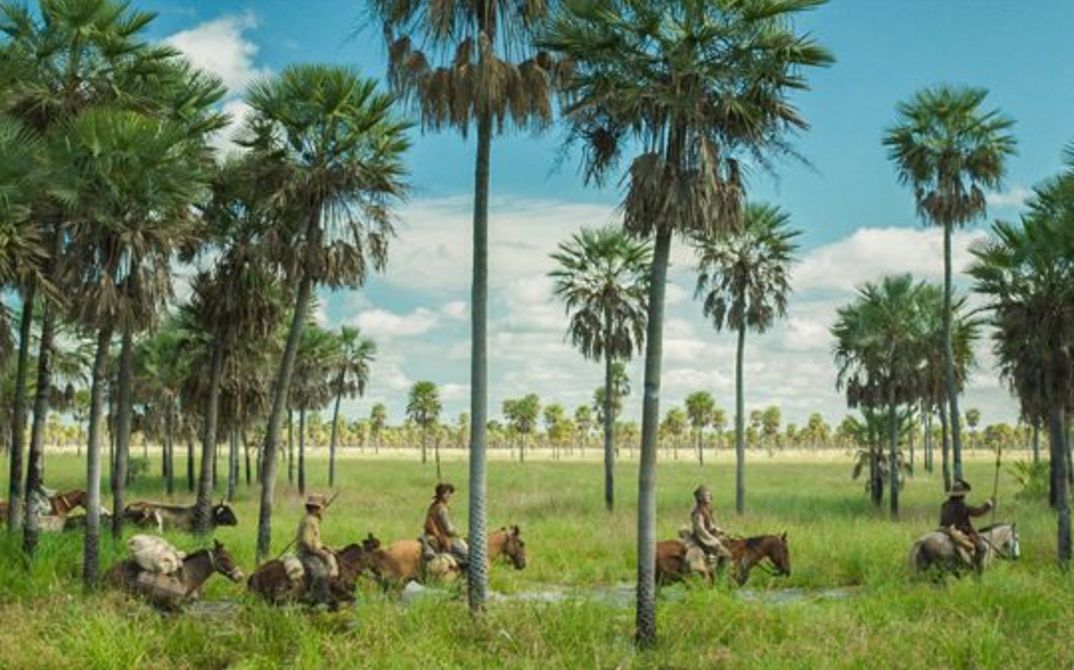LA CIÉNAGA (The Swamp, Argentina/France/Spain/Japan 2001, 4. & 5.7.) A sprawling family is spending the summer in their run-down country villa. The atmosphere is close and oppressive. The children run around with guns in their hands, the teenagers bathe in the cloudy, stagnant water of the swimming pool. Mecha, the ever-inebriated matriarch, scolds her indigenous house staff, shows contempt for her husband, and watches TV reports about an apparent sighting of the Virgin Mary. Most of the time, they all just hang around sleepily, a torpor that carries an underlying charge of sexual desire. In fascinating, aesthetic fashion, Martel’s debut film dissects the lethargy of the white, privileged Argentinian middle class. Via rhythmic images arranged in carefully restricted framings and deliberately heightened noises on the soundtrack – the clinking of ice in glasses, sun loungers being dragged along concrete – the stasis which everyone has grown to accept is translated into a corporeal experience.
LA NIÑA SANTA (The Holy Girl, Argentina/Italy/Spain/The Netherlands 2004, 6. & 11.7.) 16-year-old Amalia lives in an old hotel run by her divorced mother and uncle. Amalia’s Catholic religion classes focus on receiving your calling – which doesn’t stop her and her friend Josefina from imagining what French kissing is like. When a medical congress is held at the hotel, ear specialist Dr. Jano approaches Amalia with an undeniable sexual interest, which awakens something in this “holy girl”, a longing equal parts sexual and religious which seeks to absolve him of his sin. But her attractive mother, a former diver with hearing problems, also has her eye on the doctor. Martel masterfully sustains a thick, fatal atmosphere of religious ardor, spiritual respect, and sexual desire in the spa, kitchen, and rooms of the hotel.
LA MUJER SIN CABEZA (The Headless Woman, Argentina/France/Italy/Spain 2008, 7.7., screening attended by Lucrecia Martel & 13.7.) Verónica, an upper middle-class woman with dyed peroxide blond hair, is driving home from a family get-together, when, distracted by her cell phone, she causes an accident. Did she run over a dog? Or one of the boys of indigenous extraction who was just playing in the ditch on the side of the road? Either way, she doesn’t stop. From this point on, she moves through her everyday life as if in a trance, numb and confused – although no one seems to want to notice her state and everyone tries to play down the incident. After she’s almost allowed her relatives to convince her that nothing happened, a child’s body is discovered. The finely tuned feedback noise on the soundtrack, areas deliberately kept out of focus, and detail shots all convey the same feeling of disorientation and diffuseness. A bourgeois indifference with no room for guilt soon comes into view, as do the social hierarchies of Argentinian society.
ZAMA (Argentina/Brazil/Spain 2017, 10.7., screening attended by Lucrecia Martel) Tatty wigs on the sweaty faces of the conquerors, slaves carrying heavy burdens and servants fanning the air, ostriches and lamas – a Spanish colony in Latin America at the end of the 18th century. Don Diego de Zama, an official of the Spanish crown born in South America, is stationed at a remote outpost somewhere in the provinces. He longs to be transferred, but news from the king never arrives, while a seductive Spanish countess also gives him the brush off. After years of waiting in vain, he decides to head off with a group of soldiers to hunt down a bandit and enters a veritable heart of darkness – a swamp landscape filmed in ravishing wide shots. Based on the novel by Antonio de Benedetto, Martel forges complex images and sounds to tell a story of desire, nature, and violence; stasis, insanity, delirium; the structures of colonialism and racism.
AÑOS LUZ (Light Years, Manuel Abramovich, Argentina/Brazil/Spain 2017, 12.7.) She’s light years away from being the protagonist of a film is what Lucrecia Martel says to Manuel Abramovich when he asks if he can accompany her with his camera on the shoot for her film ZAMA. Yet the project came about anyway. Scenes from ZAMA framed in red are placed alongside observations of Lucrecia Martel at work: she discusses the choice of props, inspects make-up, corrects the actors’ intonation during rehearsals. She has precise ideas about how things should be, listens and watches full of concentration, and always remains calm and relaxed. With her cat-eye glasses, pink headphones and occasional cigar, she also has definite star potential – and does indeed play the leading role in this portrait of a charismatic filmmaker and her creative process. (bik)



